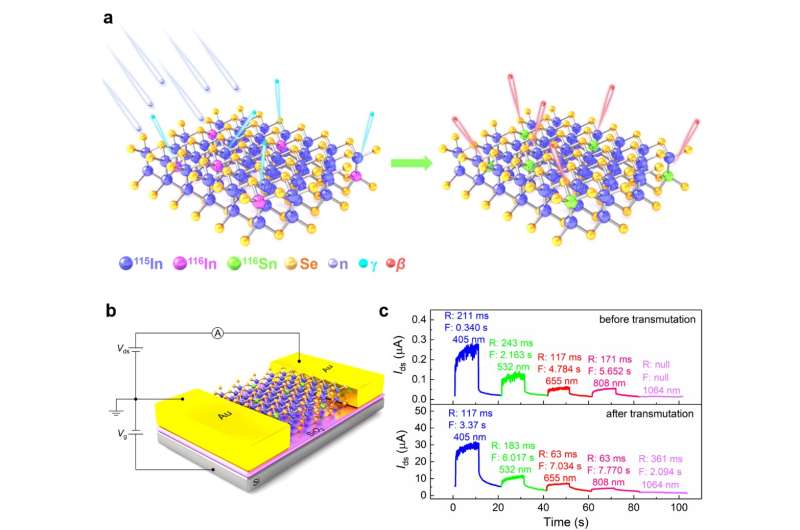Phys.org June 7, 2022
An international team of researchers (China, USA – SUNY Buffalo) studied and demonstrated the implementation of neutron-transmutation doping (NTD) to manipulate electron transfer. NTD is a controllable in-situ substitutional doping method that utilizes the nuclear reactions of thermal neutrons with the nuclei of the atoms in semiconductors. It provides a new way to dope 2D materials intentionally without extra reagents and it can be introduced into any step during the fabrication of 2D-materials-based devices, or even used post-fabrication. They successfully narrowed the bandgap and increased the electron mobility of SN-doped layered InSe, reflecting a significant improvement. They raised the field-effect electron mobility significantly. At the same time, the photodetector’s responsivity improved by about fifty times. According to the researchers NTD holds enormous promise for the future of materials research and enables significant new opportunities in materials-based technologies…read more. Open Access TECHNICAL ARTICLE

Transmutation doping scheme for the 2D InSe, including capturing thermal neutrons and decay of γ and β- particles… Credit: eLight (2022).